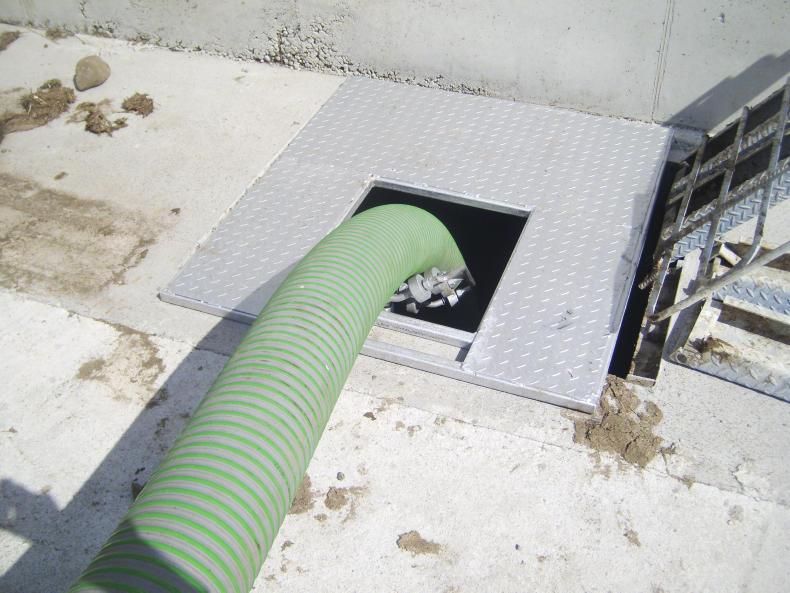Farmer Mattie Butler told Friday’s National Conference on Farm Safety and Health how only two weeks ago he ended up at the bottom of a slurry tank.
“Approximately two weeks ago, I had an experience of ending up in the bottom of a slurry tank, which is not a nice experience.
“I did get out of it. The space I went down through was 10 in.
“The biggest problem when you do end up down there is that you’re weighed down; your wellingtons and everything are weighing you down,” he said.
“There’s no access to get out; all the walls are smooth and could I suggest that there could be a ladder or some access point [out of tanks], so that if you do happen to end up down there you do have a way of getting out.
“The only way I could get out that time was that on the next slat there was a rope that we used to use for lifting the slabs. I grabbed onto that and pulled myself up and out. So that’s why I’m here today.
“Most of the tanks now are maybe 8ft deep, so you will have no way of getting out whatsoever.”
Preventing falling in
Commenting on Mattie’s situation was Pat Griffin, senior inspector for agriculture with the HSA, who said that he made a very good point which many people haven’t thought about; when people fall in how do they get out?
“Unfortunately, most do never get out and quickly succumb to the gases or liquid.
“The focus has to absolutely be on preventing falling in. So no matter what size the hole or access point is, having proper protection there that you don’t actually fall in, whether it’s a grid or some mechanism, is [what we have to look at first].
“I did come across this before in relation to some tanks and didn’t follow it up too much, as we didn’t want to encourage people to be getting in and out of tanks.
“There was a practice years ago where farmers used to go in and [put] the last bit of slurry into the corner and out – that’s highly dangerous because of the amount of hydrogen sulphide gas that might be in there.
“I think we need to look at this and consider it fully before we make any movement on it.”
Robert Leonard of the Department of Agriculture is in charge of drawing up specifications for the design of these tanks. He said: “It should be something we should look at.
“It’s really where to place the ladder or what sort of system you put into the tank so you can get out of it.
“We need to look at that.”
Read more
‘Farmers are under increased work pressure’
Listen: tackling the reasons behind childrens’ farm deaths
Farmer Mattie Butler told Friday’s National Conference on Farm Safety and Health how only two weeks ago he ended up at the bottom of a slurry tank.
“Approximately two weeks ago, I had an experience of ending up in the bottom of a slurry tank, which is not a nice experience.
“I did get out of it. The space I went down through was 10 in.
“The biggest problem when you do end up down there is that you’re weighed down; your wellingtons and everything are weighing you down,” he said.
“There’s no access to get out; all the walls are smooth and could I suggest that there could be a ladder or some access point [out of tanks], so that if you do happen to end up down there you do have a way of getting out.
“The only way I could get out that time was that on the next slat there was a rope that we used to use for lifting the slabs. I grabbed onto that and pulled myself up and out. So that’s why I’m here today.
“Most of the tanks now are maybe 8ft deep, so you will have no way of getting out whatsoever.”
Preventing falling in
Commenting on Mattie’s situation was Pat Griffin, senior inspector for agriculture with the HSA, who said that he made a very good point which many people haven’t thought about; when people fall in how do they get out?
“Unfortunately, most do never get out and quickly succumb to the gases or liquid.
“The focus has to absolutely be on preventing falling in. So no matter what size the hole or access point is, having proper protection there that you don’t actually fall in, whether it’s a grid or some mechanism, is [what we have to look at first].
“I did come across this before in relation to some tanks and didn’t follow it up too much, as we didn’t want to encourage people to be getting in and out of tanks.
“There was a practice years ago where farmers used to go in and [put] the last bit of slurry into the corner and out – that’s highly dangerous because of the amount of hydrogen sulphide gas that might be in there.
“I think we need to look at this and consider it fully before we make any movement on it.”
Robert Leonard of the Department of Agriculture is in charge of drawing up specifications for the design of these tanks. He said: “It should be something we should look at.
“It’s really where to place the ladder or what sort of system you put into the tank so you can get out of it.
“We need to look at that.”
Read more
‘Farmers are under increased work pressure’
Listen: tackling the reasons behind childrens’ farm deaths





SHARING OPTIONS